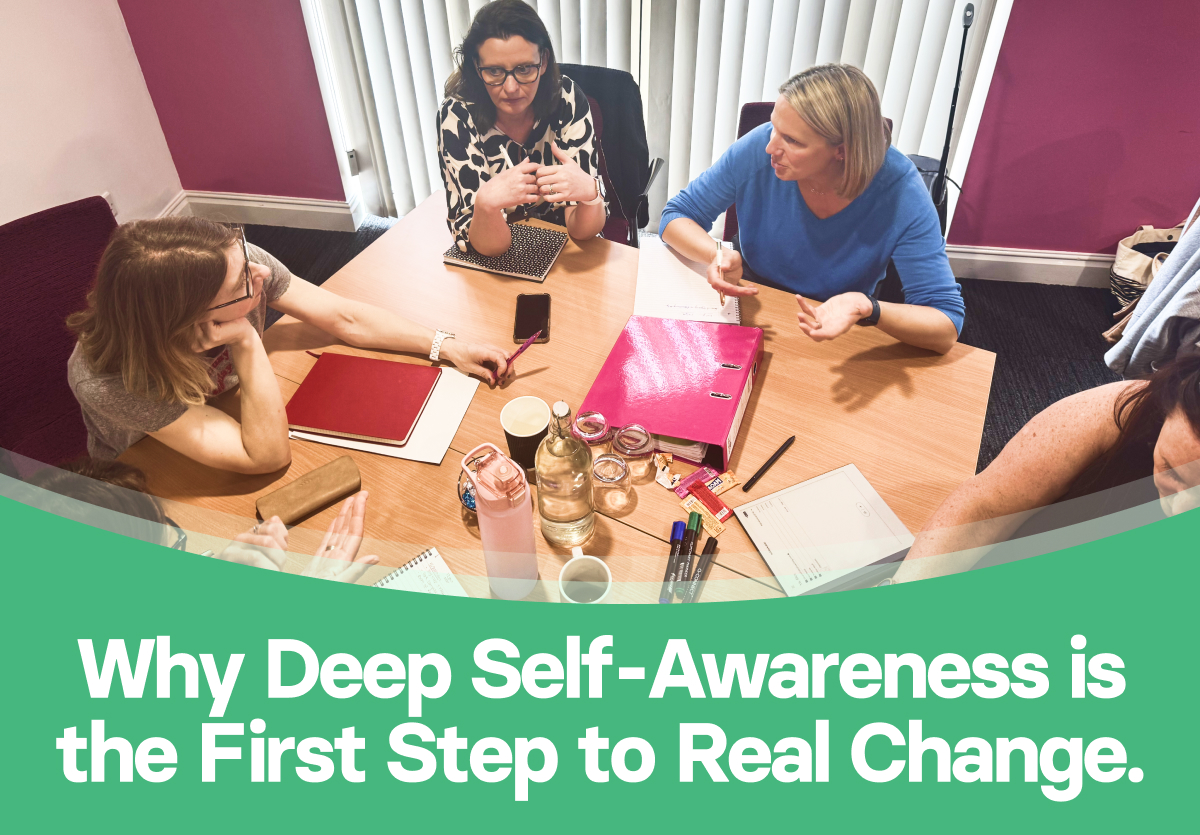Literature is an amazing thing. The written word holds a unique potency — a potential to inspire, guide, and transform. Even when it comes to the world of coaching, this remains the same. This article delves into the art of crafting compelling blog posts for coaches, unraveling the potential impact each word can have on their clients’ journeys.
At Paseda360, we understand the essence of co-creation and the art of personal storytelling, recognising them as integral elements in establishing meaningful connections. Join us as we explore how harnessing the power of impactful narratives can elevate coaching experiences and foster genuine connections between coaches and clients & what kind of topics can address these factors to the most extent.
Topic 1: Journey to Authenticity
When it comes to any type of coaching, authenticity emerges as an obvious guiding beacon for both coaches and clients. Coaches sharing personal stories becomes a powerful catalyst for building trust and fostering genuine connections. By recounting their own journey towards authenticity, coaches illuminate the path for clients, making the coaching relationship a shared voyage of growth. When writing the article on this idea, consider the following steps.
Reflect on Personal Moments
- Begin by introspecting and identifying key moments in your life that contributed to your personal growth and journey toward authenticity.
- Consider challenges, setbacks, and triumphs that have shaped your values, beliefs, and coaching philosophy.
- Come up with an attractive topic for the article idea, so readers will be interested in following on what you’re about to say.
Identify Transformative Experiences
- Pinpoint experiences that brought about a shift in your mindset toward the importance of authenticity, perspectives, or approach to coaching.
- Share specific instances where you faced challenges or learned profound lessons, emphasising the transformative nature of these experiences.
Weave a Compelling Narrative
- Structure your blog post as a narrative, taking readers on a journey through the significant moments of your personal and professional life.
- Use descriptive language to paint a vivid picture, allowing readers to emotionally connect with your story.
Relate to Coaching Philosophy
- Connect your personal experiences to your coaching philosophy, illustrating how authenticity has influenced your approach to coaching.
- Showcase the alignment between your lived experiences and the principles you bring into your coaching sessions.
End with a Call to Action
- Conclude your blog post with a compelling call to action, encouraging readers to reflect on their own authenticity journey or share their stories.
- Foster engagement by inviting comments, questions, or personal anecdotes from your readers.
Topic 2: Overcoming Challenges: Crafting a Resilience-Focused Blog Post
When talking about shared challenges, the first step is acknowledging the profound impact vulnerability has on forging genuine connections within the coaching space. By openly sharing personal stories of significant challenges, coaches create a platform where authenticity becomes the catalyst for transformative relationships.
Step 1: Define the Challenge
- Clearly articulate the challenge you faced, providing context and background to help readers understand the complexity of the situation.
- Express your initial feelings and thoughts, creating a relatable starting point for readers.
Step 2: Narrate the Journey
- Take readers through the journey of overcoming the challenge, detailing the strategies, mindset shifts, or support systems that played a crucial role.
- Share both the successes and setbacks encountered along the way, fostering authenticity.
Step 3: Reflect on Learnings
- Reflect on the lessons learned during the process of overcoming the challenge.
- Highlight personal growth, resilience, and any unexpected positive outcomes that emerged from navigating the obstacle.
Step 4: Offer Practical Insights
- Provide practical insights and strategies that readers can apply to their own challenges.
- Break down the actionable steps you took, offering a roadmap for readers facing similar obstacles.
Step 5: Emphasise Personal Growth
- Discuss how the experience contributed to your personal growth and development as a coach.
- Illustrate the transformative power of resilience and overcoming challenges in shaping your coaching philosophy.
Topic 3: Building Resilience: Strategies and Stories
To nurture resilience in clients, employ a toolkit that blends empathy, encouragement, and actionable strategies. Tailor your approach to their unique circumstances, fostering a supportive environment that acknowledges setbacks while highlighting the potential for growth. Techniques may include reframing challenges, setting realistic goals, and emphasising the power of a growth mindset.
Writing a Blog Post on Building Resilience
- Introduction: Initiate your blog post by acknowledging the transformative journey of building resilience. Set the tone for an inspiring narrative that combines personal insights and universal principles.
- Personal Storytelling: Share a personal account illustrating a moment of resilience in your coaching career. Emphasise the emotions, hurdles faced, and the pivotal role resilience played in overcoming challenges.
- Key Concepts and Strategies: Break down the fundamental concepts of resilience and introduce actionable strategies. Provide practical tips, anecdotes, or case studies to illustrate how these strategies can be implemented in real-life coaching scenarios.
- Client-Centric Approach: Highlight techniques specifically tailored for clients. Showcase instances where applying resilience-building strategies led to remarkable transformations, underscoring the relevance and effectiveness of these approaches.
- Conclusion: End by reinforcing the importance of resilience in coaching and its profound impact on personal and professional development. Encourage readers to share their stories and insights, fostering a sense of community around the shared journey of resilience and growth.
Topic 4: The Impact of Mindfulness in Daily Life
Incorporating mindfulness techniques into coaching can enhance clients’ self-awareness, emotional regulation, and overall well-being. Techniques like guided meditation, mindful breathing, and awareness exercises can create a holistic coaching experience, fostering a deeper connection between coaches and clients.
Creating a Blog Post on the Benefits of Mindfulness
- Introduction: Start by highlighting the transformative impact of mindfulness on both personal and professional aspects of life. Set the stage for a blog post that explores practical applications and benefits.
- Defining Mindfulness: Begin with a clear definition of mindfulness, explaining its significance in cultivating presence, reducing stress, and improving overall mental health.
- Personal Anecdote: Share a personal story illustrating the positive effects of mindfulness in your coaching journey. Discuss specific situations where mindfulness practices contributed to improved client outcomes.
- Benefits for Coaches: Outline how mindfulness practices benefit coaches themselves. Address aspects such as stress management, enhanced focus, and the ability to create a more empathetic coaching environment.
- Client Success Stories: Integrate success stories from clients who embraced mindfulness. Illustrate tangible improvements in their lives, emphasising the role of mindfulness in their personal growth and goal attainment.
- Step-by-Step Guide to Mindfulness: Provide a step-by-step guide for readers to incorporate mindfulness into their coaching practices. Include practical exercises, recommended resources, and tips for overcoming common challenges.
- Conclusion: Summarise the key benefits of mindfulness and reiterate its transformative potential in coaching. Encourage readers to explore and implement mindfulness practices in their coaching journeys.
Topic 5: Navigating Career Transitions: A Guide
Guiding clients through career transitions is a pivotal aspect of coaching. Coaches play a crucial role in providing support, clarity, and actionable strategies during periods of professional change.
Steps to Writing a Blog Post about Navigating Career Changes
- Introduction: Commence the blog post by emphasising the significance of career transitions and the role coaches play in facilitating smooth navigation through such phases.
- Understanding the Dynamics: Break down the complexities of career transitions, highlighting common challenges clients face. This section sets the stage for the comprehensive guide you’re about to provide.
- Share Success Stories: Illustrate success stories of clients who successfully navigated career changes with coaching assistance. Personal anecdotes add a relatable touch and instill confidence in readers.
- Identifying Client Needs: Discuss the importance of assessing clients’ needs during career transitions. Offer insights into effective communication and active listening as foundational skills in understanding clients’ aspirations and concerns.
- Creating a Transition Plan: Guide readers through the process of creating a tailored transition plan for clients. Break down the steps involved, from setting clear goals to identifying transferable skills.
- Overcoming Challenges: Address common challenges associated with career changes and provide practical strategies for overcoming them. This could include managing uncertainty, building resilience, and maintaining a positive mindset.
- Paseda360’s Approach to Career Transitions: Integrate Paseda360’s coaching methodologies into the discussion. Emphasise how the academy supports coaches in addressing the unique challenges of career transitions and fostering client success.
- Offer Resources: Provide additional resources such as templates, checklists, or recommended readings to further assist readers in guiding their clients through career transitions.
- Conclusion: Summarise key takeaways, reiterating the role of coaches in empowering clients through career changes. Encourage coaches to leverage the insights shared to enhance their coaching practices.
Topic 6: Relationships and Connection
Effective coaching transcends mere professional interactions; it delves into the realm of authentic relationships. Building meaningful connections with clients is pivotal for successful coaching outcomes.
Crafting a Blog Post on Fostering Connections
- Introduction: Start by highlighting the pivotal role relationships play in the coaching journey. Emphasise that coaching is not just about professional guidance but creating a genuine connection.
- Understanding Client Relationships: Share insights into the dynamics of coach-client relationships. Discuss the importance of trust, mutual respect, and open communication as foundational elements.
- Personal Anecdotes: Integrate personal anecdotes or client success stories that showcase the transformative power of strong coach-client relationships. These anecdotes should highlight the depth of connection and understanding achieved.
- The Co-Created Experience: Emphasise the concept of co-creation in coaching relationships. Explain how collaboration between coach and client leads to more meaningful and sustainable results.
- Communication Strategies: Provide practical communication strategies for coaches to foster deeper connections. This could include active listening techniques, empathetic communication, and fostering a non-judgmental space.
- Navigating Challenges: Acknowledge that building relationships may encounter challenges. Offer guidance on navigating these challenges, promoting healthy dialogue, and addressing conflicts constructively.
- Paseda360’s Emphasis on Connection and Trust: Showcase how Paseda360 places a strong emphasis on building authentic connections and earning trust within its coaching community. Highlight any specific features, events, or resources that promote relationship-building and trust, fostering a supportive environment for both coaches and clients.
In the coaching landscape, the essence of earning trust lies in consistent authenticity, empathetic understanding, and a dedication to transparent communication. Building trust creates a foundation for meaningful connections and transformative coaching relationships. Talk about this in detail while giving examples.
- Tips for Virtual Coaching: In the digital age, where virtual coaching is prevalent, provide tips specifically tailored for building strong connections in virtual coaching relationships.
- Encouraging Client Feedback: Discuss the importance of seeking client feedback on the coaching relationship. Explain how constructive feedback contributes to continuous improvement.
- Conclusion: Summarise the essence of the blog post, reiterating the transformative impact of fostering genuine connections in the coaching journey. Encourage coaches to embrace the co-created experience for enhanced client engagement and success.
Topic 7: Self-Discovery Through Journaling
Journaling is a powerful tool for self-reflection and personal growth. As coaches, promoting the practice of journaling can unlock profound insights for clients on their journey of self-discovery.
Steps to Writing a Blog Post on the Power of Journaling
- Introduction: Begin by highlighting the significance of self-discovery in coaching. Introduce the concept of journaling as a transformative practice that fosters introspection and personal insight.
- Benefits of Journaling: Delve into the various benefits of journaling, such as increased self-awareness, clarification of thoughts and emotions, and tracking personal development over time.
- Scientific Backing: Provide brief insights into psychological studies or scientific research that support the positive effects of journaling on mental well-being and personal growth.
- Different Approaches to Journaling: Explore various journaling techniques, such as gratitude journaling, free writing, or structured prompts. Explain how each approach serves different purposes and suits various preferences.
- Guiding Clients to Start: Offer practical tips for coaches on introducing journaling to clients. Emphasise the importance of creating a non-judgmental and confidential space for clients to express themselves freely.
- Developing Consistency: Guide coaches on encouraging clients to make journaling a consistent practice. Discuss strategies to overcome resistance and integrate journaling seamlessly into daily routines.
- Personal Narratives: Share personal narratives or client success stories related to the impact of journaling. Highlight instances where journaling facilitated significant breakthroughs or insights.
- Interactive Exercises: Include interactive exercises or prompts within the blog post that readers can try on their own. This creates an engaging and practical element for coaches and clients alike.
- Conclusion: Summarise the blog post by underlining the transformative potential of journaling in the coaching journey. Encourage coaches to embrace and promote this powerful tool for self-discovery, fostering meaningful client progress.
Topic 8: Goal Setting – A Personalised Approach
Effective goal-setting is a cornerstone of coaching, driving clients toward success and fulfillment. Coaches play a pivotal role in guiding clients through a personalised goal-setting journey tailored to their unique aspirations.
Steps to Writing a Blog Post on Effective Goal-Setting
- Introduction: Begin by emphasising the importance of goal-setting in coaching. Introduce the concept of personalised goal-setting as a dynamic and client-centric process.
- Understanding Client Needs: Discuss the significance of understanding clients’ values, aspirations, and challenges before embarking on goal-setting. Encourage coaches to build a strong foundation by comprehending the client’s motivations.
- SMART Criteria Refresher: Revisit the SMART criteria (Specific, Measurable, Achievable, Relevant, Time-bound) for goal-setting. Provide a concise refresher to ensure coaches and clients have a shared understanding of effective goal formulation.
- Tailoring Goals to Individual Styles: Highlight the importance of tailoring goals to match individual learning styles and preferences. Discuss how considering factors such as personality, motivation, and preferred working methods enhances goal alignment.
- Co-Creation in Goal-Setting: Emphasise the co-creation aspect by involving clients actively in setting their own goals. Illustrate how this collaborative approach increases ownership and commitment to the goal achievement process.
- Breaking Down Larger Goals: Guide coaches on breaking down larger goals into smaller, manageable steps. Discuss the psychological benefits of achieving incremental successes, boosting motivation and confidence.
- Anticipating and Addressing Challenges: Explore strategies for coaches to anticipate potential challenges clients might face during goal pursuit. Provide insights into addressing setbacks and fostering resilience throughout the journey.
- Tracking Progress and Celebrating Wins: Stress the importance of ongoing assessment and celebration of milestones. Discuss the motivational impact of acknowledging and celebrating achievements, reinforcing positive behaviors.
- Paseda360’s Goal-Setting Resources: Integrate information about Paseda360’s resources related to goal-setting. Whether it’s workshops, tools, or community support, highlight how Paseda360 enhances coaches’ ability to guide clients effectively.
- Conclusion: Conclude the blog post by summarising the steps and strategies outlined for effective, personalised goal-setting. Encourage coaches to implement these practices, fostering a client-centered approach that leads to meaningful and sustainable transformations.
Topic 9: Empathy in Coaching: Lessons from Real Experiences
Empathy serves as the cornerstone of effective coaching, forging meaningful connections between coaches and clients. Its transformative impact extends beyond professional realms, delving into the personal and emotional spheres, ultimately driving client success.
Steps to Writing a Blog Post on the Role of Empathy in Client Success
- Introduction: Open with a compelling introduction emphasising the pivotal role of empathy in coaching. Illustrate how genuine empathy fosters trust, understanding, and client success.
- Defining Empathy in Coaching: Provide a concise definition of empathy in the coaching context. Distinguish it from sympathy and elaborate on how it forms the basis of strong coach-client relationships.
- The Empathetic Coach: Discuss the characteristics of an empathetic coach. Encourage coaches to reflect on their own empathetic qualities and recognise areas for improvement, fostering a commitment to continuous growth.
- Client-Centric Approach: Emphasise the shift to a client-centric approach facilitated by empathy. Guide coaches on actively listening to clients, understanding their perspectives, and acknowledging emotions without judgment.
- Empathy in Action – Real Scenarios: Share real-world scenarios where empathy played a transformative role in coaching sessions. Use anonymised examples to demonstrate how empathetic responses can address challenges, build resilience, and drive positive outcomes.
- Overcoming Empathy Barriers: Acknowledge potential barriers to empathy and guide coaches on overcoming them. Discuss common challenges such as cultural differences or personal biases, offering strategies to navigate these hurdles.
- Developing Empathy Skills: Outline practical steps for coaches to enhance their empathy skills. This could include attending workshops, engaging in reflective practices, or seeking feedback from peers to continually refine their empathetic approach.
- The Ripple Effect: Discuss the ripple effect of empathy, not only on individual coaching sessions but also on overall client well-being. Illustrate how empathetic coaching contributes to a positive coaching culture and client satisfaction.
- Case Studies and Testimonials: Integrate case studies or testimonials from coaches who have successfully employed empathy in their practice. Highlight specific client outcomes and the impact of an empathetic coaching relationship.
- Paseda360’s Emphasis on Empathy: Connect the blog post to Paseda360’s coaching philosophy, emphasising the significance of empathy. Discuss how Paseda360 provides resources, training, and a supportive community for coaches to cultivate and apply empathetic skills effectively.
- Conclusion: Conclude by summarising the key steps and insights outlined for incorporating empathy into coaching practices. Encourage coaches to embrace empathy as a powerful tool in driving client success and fostering authentic, impactful coaching relationships.
Topic 10: Celebrating Wins – A Coach’s Reflection
Acknowledging and celebrating wins is not just a moment of joy; it’s a crucial aspect of the coaching journey. Recognising and applauding client successes not only motivates them but also reinforces the positive impact of coaching on their lives.
Steps to Crafting a Blog Post on Celebrating Client Successes
- Introduction: Start with an engaging introduction, highlighting the significance of celebrating wins in the coaching process. Emphasise the positive effects on both clients and coaches.
- Defining Success in Coaching: Discuss what success means in the coaching context. Encourage coaches to broaden their perspective beyond tangible achievements to encompass personal growth, mindset shifts, and enhanced well-being.
- The Coach’s Role in Celebration: Clearly articulate the coach’s role in celebrating victories. This includes recognising milestones, expressing genuine joy for clients, and fostering a positive coaching environment that motivates continued progress.
- The Impact of Celebration on Clients: Detail how celebrating successes contributes to clients’ motivation and confidence. Explore psychological aspects such as the reinforcement of positive behaviors and the cultivation of a success-oriented mindset.
- Showcasing Diverse Success Stories: Share diverse success stories from coaching experiences. Highlight a range of achievements, from overcoming challenges to achieving personal or professional goals. Ensure these stories resonate with a broad audience.
- Reflecting on Your Coaching Journey: Encourage coaches to reflect on their own coaching journey. Share personal insights about the joy derived from witnessing client successes and the fulfillment it brings to the coaching profession.
- Incorporating Client Testimonials: Integrate testimonials from clients expressing their gratitude for the celebration of their wins. Authentic testimonials add credibility and provide real-life examples of the positive impact of coaching.
- Creating Rituals for Celebration: Suggest the establishment of rituals for celebrating wins. This could include personalised congratulatory messages, virtual celebrations, or collaborative efforts to acknowledge achievements within a coaching community.
- Navigating Challenges in Celebrating Wins: Address potential challenges coaches may encounter in celebrating victories, such as clients downplaying their successes or facing setbacks. Provide strategies for overcoming these challenges while maintaining a positive coaching dynamic.
- Paseda360’s Approach to Celebration: Connect the blog post to Paseda360’s coaching philosophy, emphasising the importance of celebration in the coaching process. When it comes to celebrating success and wins, Paseda360 embrace the spirited term ‘shaking the pom poms.’ Include that as well. Showcase how Paseda360 integrates celebratory practices and fosters a supportive community for coaches to share successes on the joy of “shaking the pom poms”.
- Conclusion: Conclude by summarising the steps and insights shared for crafting a blog post on celebrating client successes. Emphasise the role of celebration in creating a thriving coaching relationship and motivating clients toward continuous growth and achievement.
Final Words
So, these are ten topic ideas for coaches can write to help their clients. As we draw the curtains on this exploration of impactful coaching blogs, let’s take a moment to reflect on the potent tools that fuel authentic connections—storytelling and co-creation too. The ability of these elements to weave narratives, inspire change, and deepen the coach-client relationship is undeniable.
Paseda360 understands that the evolution of coaching is a collaborative effort. Here, seeking feedback is not just a formality; it’s a cornerstone of growth. Actively involve your clients in shaping your coaching content, and leverage the feedback mechanisms within Paseda360 to refine and adapt. It’s a continuous cycle of improvement where your coaching blogs become a responsive and evolving resource for your clients.







